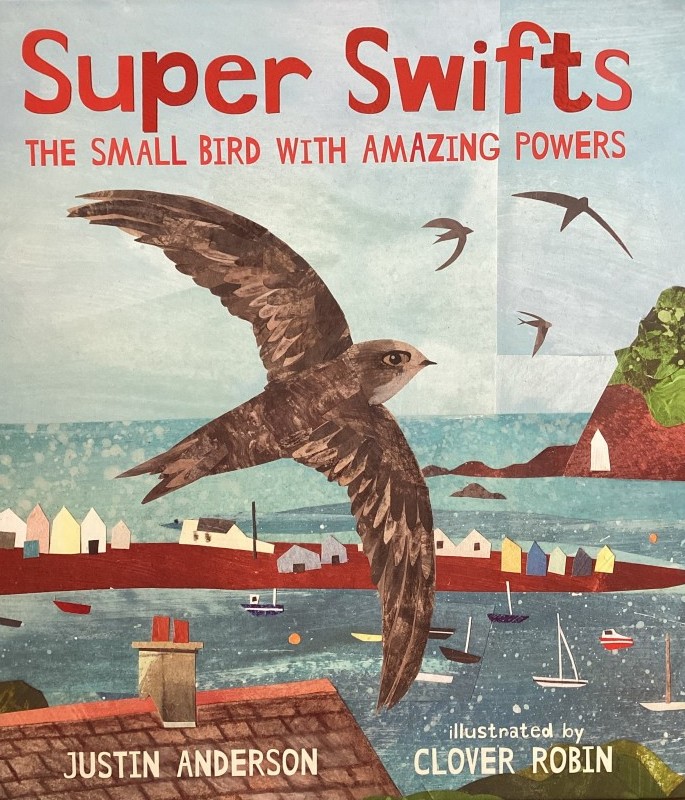Inspiring Young Readers
 posted on 23 May 2024
posted on 23 May 2024
Super Swifts: the small birds with amazing powers by Justin Anderson, illustrated by Clover Robin
I think we’re currently in something of a golden age when it comes to non-fiction books for younger readers – especially beautiful picture books dealing with the natural world. Justin Anderson’s Super Swifts: the small bird with amazing powers can certainly line-up with the best of those that have found their way to The Letterpress Project.
I’m no voracious ornithologist but the more I learn about some of the avian super-stars the more I find myself astonished by what I discover (and a bit ashamed that it’s taken me this long to find out). Of course, I’m well aware that the Swift has a reputation as something of a speedster – small, a little underwhelming when it comes to plumage and migratory – but who knew that they can, if they need to, stay in the air for up to four years without ever landing? Astonishing. But, of course there’s more – much more.
Anderson tells us about their remarkable travels from Central Africa to the colder northern climates – places like the UK. Starting in April and using the sun and moon to navigate, Swifts can cover up to 500 miles a day as they fly across the continent and rest on Africa’s west coast in order to refuel.
They’ve mastered the trick of drinking rainwater while still on the wing and they will arrive on our shores something like a month after the journey began. Swifts mate for life, so when the female arrives, she’ll find her partner – who has also made the trip – build a nest and breed.
There’s also a whole new language involved with describing the life cycle and behaviour of Swifts. I love the fact that gangs of these birds flying together are known as ‘screaming parties’ and that the newly coupled pairs when searching for a place to nest are called ‘bangers’ because they use their wings to knock on potential nest holes to check they are vacant.
Of course, life for the Swift isn’t all hunky dory – they have their parasites (louse flies) and their predators but that’s all part of their life cycle too.
I’ll leave you to find out the rest for yourself because you’re going to want to get your own copy. Devon-based artist, Clover Robin’s illustrations turn this into a delightful, colourful reading experience.
Published by Walker Books, you will be able to get a copy from your local independent bookshop – who will be happy to order it for you if they don’t have it on their shelves.
Terry Potter
May 2024